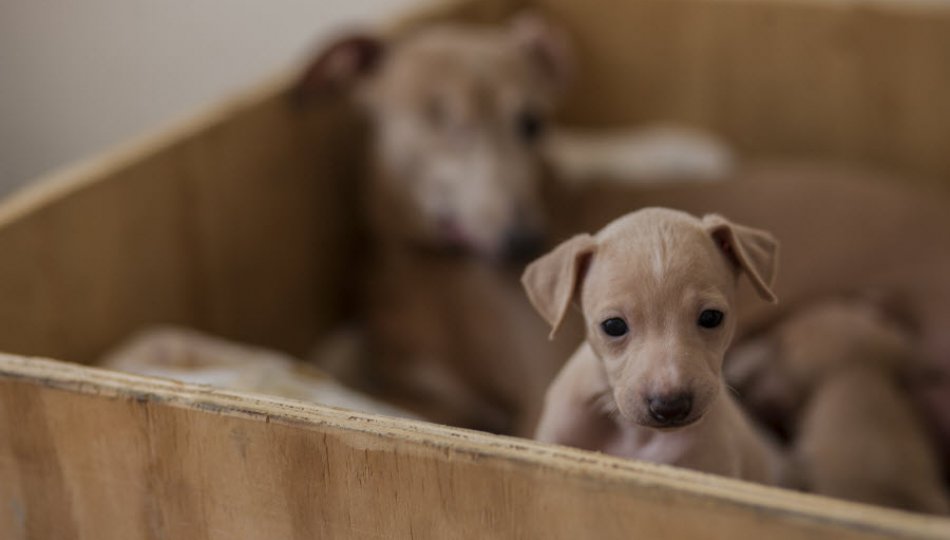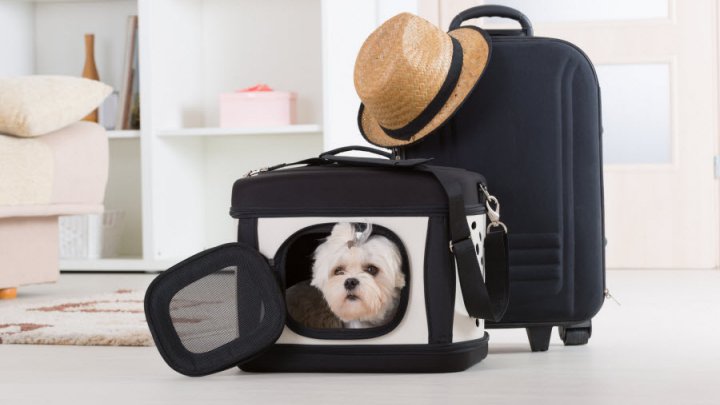Once you have made the decision to get a puppy and found a reputable breeder, some might think the hard part of choosing your new furry family member is over. In reality, however, you have yet to make the most important decision when it comes to getting a new dog. When the exciting day arrives and you are ready to pick out your new best friend, there are several important tests you should plan on performing on all the dogs to make sure that the temperament of your new puppy fits with what you are looking for. Depending on what type of pet owner you intend to be and what kind of dog you are getting, you will have to decide if you want to pick out the leader of the pack, the runt of the litter, or a dog who falls somewhere in the middle. Here are some of the tests you can use to try to determine your new pet's personality.
- Interaction with Other Dogs – One of the easiest behaviors to notice when you first enter the room to view a litter of puppies is how they interact with each other. You will likely notice that several of the pups are playing amongst themselves, while others may be sleeping or eating. Start off by watching the interactions among the litter for several minutes before you become involved with the puppies at all. Notice if there are some dogs who seem to always be on top of any scuffles as well as if there are some who are consistently more submissive. You should also take note of any pups who seem to prefer not to interact with their fellows. Ideally, you'll want to pick out a puppy who seems to enjoy the company of other dogs because that should be an indicator that he will continue to be friendly and social with others as he grows up. You should also look for a pup who is comfortable taking on both the dominant and the submissive role during playtime. Pups who always need to be "top dog" are likely to be harder to control, while those who are consistent pushovers might be a little too meek.
- Response to People – Perhaps the most important attribute a dog can reveal is friendliness toward people. More than just a measure of how much your new pup will want to bond with you, it is good to get a sense of how well she does around all sorts of people. Ideally, when you go to pick out a new puppy, you should go in a group of at least three people. Try to bring an adult man and woman as well as a child under the age of 10. You will want to make sure that your new pup reacts the same way to humans of both genders and all ages. To test a puppy's response to people, begin by standing a little ways away from the pup and trying to beckon her toward you. If she comes over, try to get her to stay for a while by giving her attention. Take note of the initial response. A puppy who gets scared when called is likely to be afraid of people while one who has no interest in you is likely very independent. The ideal people-dog will be glad to pay you a visit and stick around as long as you keep her occupied. Once you have completed this test, have your comrades see if they get a similar response.
- Behavior When Being Handled – One of the most difficult types of dogs to live with is one who reacts badly when being handled by people. It can make a trip to the vet or an attempt to cut your pup's nails turn into a huge and uncomfortable ordeal. You should try, therefore, to pick a puppy who shows no signs of hesitation about being poked and prodded. Begin the test by picking up your pup and cradling him like a baby. A dog who tries to squirm and get away is likely going to be one who is hard to pin down. Contrarily, a pup who stays put but seems terrified is going to be equally hard to handle. The ideal puppy may wiggle and squirm a little, but should eventually settle down and just let you hold him. If your prospective pup has no problems with this first test, follow it up by lightly touching him all over from head to toe. Make sure to lightly grab or tug some of his most sensitive areas like his ears and tail, and take note if he has a negative reaction. Hold onto the puppy's paws for several seconds and mess around with his toenails. While the dog may not particularly like all of the prodding, a puppy who stays relaxed and doesn't respond negatively or aggressively should continue to be easy to handle in adulthood.
- Guarding Tendencies – If your dog shows a tendency toward guarding her food early in life, it will be a hard habit to break as she grows up. Try to check for any guarding behaviors by giving the puppy some food or a chew toy. After a few seconds, approach the pup and pet her on the head and body. As long as she doesn't respond negatively to that touch, reach for the food bowl or toy and try to take it away. Puppies who growl or try to bite in response to this situation are likely to have problems with guarding in their future.
- Response to Sights and Sounds – Regardless of how the puppy has responded to all the tests so far, you might be surprised what he does when he encounters a startling sight or sound. A pup that is overly sensitive to the world around him can make for a dog that is hard to live with. To try this test, start by making a quick, loud noise while standing about 10 feet away from the puppy. A good example is banging a spoon against a metal dish to make a loud clang. If the puppy is startled by the noise but quickly seems to get over it, you will likely have a dog who won't be fazed too much by everyday loud sounds like thunder. A dog who seems overly frightened by the noise, however, may have trouble adjusting to the world around him. If the puppy seems to take no issue with the sound test, you can try a couple potentially scary sights. Try shaking out a large towel a few feet from the pup or rolling a skateboard near him. If he shows any signs of being skittish, stop the experiment and try to calm the puppy down by petting and soothing him.
While all of these temperament tests can give you some insight into a potential new puppy, none of them is foolproof. You never know quite what type of dog your little one will grow up to be. It is up to you, therefore, to be a good pet owner regardless of your pup's quirks. There is no substitute for getting proper obedience training to make sure your pet understands his place in the world. You can also work one-on-one with trainers to try to break any bad habits that you may have missed. Every dog has the potential to be a great pet, and it is up to you to try to work with your new puppy to make him the perfect fit for your newly expanded family.















